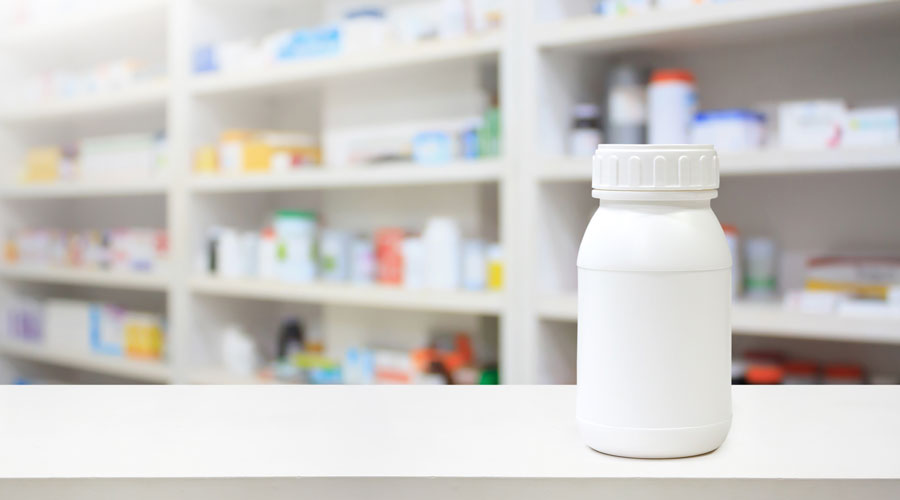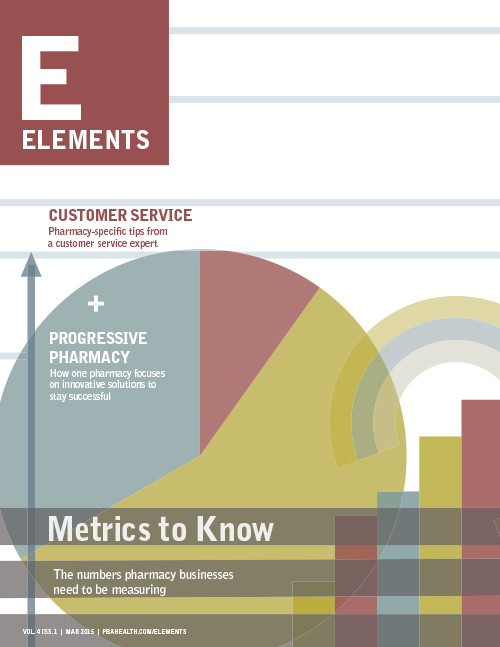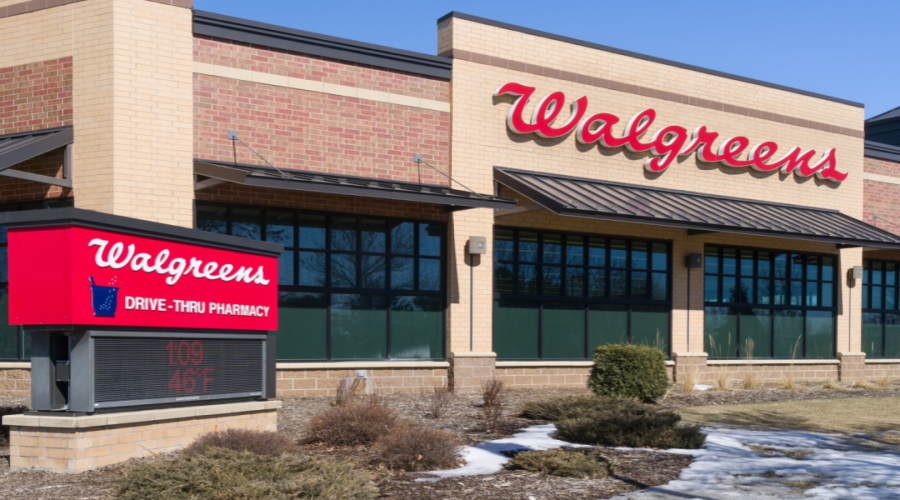Inside: Retail pharmacy profit margins matter more than ever today. Find out the average independent pharmacy profit and learn how to grow yours beyond it.
These days, not all independent pharmacies are faring the same.
As independent community pharmacies fight uphill battles to hold onto their profits, some are doing better than others.
You look at your profit margins and ask yourself, how do you stack up?
Are other pharmacies finding success in an increasingly difficult industry?
Have they figured out a way to overcome plummeting reimbursements?
We’ve got the answers to that.
And we know how you can earn pharmacy profits that others wish they had.
Discover the average independent pharmacy profit margin and how you can catapult your pharmacy beyond it.
How to Calculate Your Pharmacy Profit Margins
Before you can compare your pharmacy to the average, you need to know how to calculate your pharmacy margins.
Profit margin is profit expressed as a percentage of revenue.
You need to know how to calculate both gross margin and net margin.
Here’s a quick way to calculate gross margin:
Say you spend $100,000 on inventory and sell that inventory for $125,000.
You divide your profit ($25,000) by your revenue ($125,000).
25,000/125,000 = 0.2
Your gross profit margin is 20 percent.
Here’s a quick way to calculate net margin:
Say you earn a profit of $25,000 on your inventory. Your expenses (salaries, overhead, indirect costs, etc.) cost you $5,000.
You subtract your expenses ($5,000) from your gross profit ($25,000) to get your net profit.
25,000 – 5,000 = 20,000
Now divide your net profit ($20,000) by your revenue ($125,000).
20,000/125,000 = 0.16
Your net profit margin is 16 percent.
What is the Average Independent Pharmacy Profit Margin?
So, how does your profit margin stack up against the average independent pharmacy profit margin?
The average independent pharmacy profit margin used to be steady and reliable.
But recently that’s changed.
“Below-cost reimbursement and unpredictable DIR fees in Medicare Part D, combined with other marketplace pressures, have had a profound impact on recent gross margins, falling by 5 percent over the past three years,” according to the 2017 NCPA Digest from the National Community Pharmacists Association (NCPA).
The average independent pharmacy profit margin in 2018 landed at 21.8 percent.
That might be enough to survive, but is it enough to thrive?
Some experts say a pharmacy’s profit margin shouldn’t be less than 25 percent.
And you could be earning far more than that.
 These Are the Most Important Pharmacy Metrics to Measure
These Are the Most Important Pharmacy Metrics to Measure
This white paper includes 30+ formulas to calculate the most important metrics for independent pharmacies. You’ll learn to think like a retailer, discover the methods to track and measure meaningful pharmacy metrics, and learn ways to use pharmacy metrics to get insight into business performance.
7 Ways to Earn More Than the Average Independent Pharmacy Profit
Want to earn higher retail pharmacy profit margins than the average independent pharmacy? Here are 10.
1. Increase profit per prescription
Every pharmacy owner knows that pharmacy benefits managers (PBMs) control the price of prescriptions.
They set the average wholesale price (AWP) and you have to take it or leave it.
And it’s no secret to you that many times, they set the price lower than what you pay for the drug. So, you end up losing money when you sell the product.
When PBMs set your prices, they set your profit margin. So, how could you possibly increase your average profit per prescription?
Ways to increase profit per prescription:
- Learn which insurance plans provide the best reimbursement rates for your pharmacy and focus on earning more prescriptions from them
- Partner with a pharmacy services administration organization (PSAO) to more easily identify your best insurance plans
- Talk to large companies in your area and create partnerships where they encourage their employees to use your pharmacy
- Pinpoint your most profitable prescriptions and make sure those patients use services like medication synchronization, so they don’t miss a refill
2. Boost prescriptions from top prescribers
All prescriptions flow from prescribers.
If you find out the top prescribers in for your pharmacy, you’ll find the top source of prescriptions.
Although patients choose their pharmacy, many of them take the recommendation of their physician. Physicians are one of patients’ most trusted sources of healthcare information. (Just behind pharmacists.)
Establish relationships with your top prescribers. In particular, partner with prescribers in fields that prescribe high-margin, high-dollar medications. (Like oncology.)
Be ready with a persuasive explanation on how you can benefit their business by improving the level of care for their patients. They’re subject to strict performance requirements, so if you help boost their performance, they’ll likely reciprocate.
And make sure to nurture the prescriber relationships you already have, too.
3. Increase prescriptions from top patients
Some of your patients need higher-margin medications than others. And some fill prescriptions far more often than others.
Focus on getting the most out of your most profitable patients by increasing their adherence.
Although there’s no simple answer to improving adherence, some strategies can help.
Ways to help patients stay adherent:
- Start a medication synchronization program
- Offer adherence packaging and delivery services
- Send patients refill and pick-up reminders
- Use health apps that track adherence
- Teach struggling patients how to swallow pills
- Build relationships with patients
Also, many patients continue to take their prescriptions after they expire. Remind your patients of the dangers of consuming expired drugs and encourage them to refill their prescriptions on time.
4. Gain more profitable patients
You can only get so much out of your current patients. To increase your profit margins, you’ll need to attract more patients.
The most profitable patients include:
- Those with chronic conditions
- Patients who take specialty medications
- Those who need compounded medications
Don’t just sit back and hope these patients come to your pharmacy. Target the most profitable pharmacy patients. So you can earn more than the average independent pharmacy profit.
Strategies to gain more profitable patients:
- Ask your top patients to refer their family and friends
- Develop relationships with doctors and nurses to refer patients who need specialty and compounded medications
- Market your pharmacy as the place to go for patients with conditions like diabetes, heart disease, cancer, and obesity
5. Increase non-prescription pharmacy sales
The average margins on front-end merchandise are 15 percent higher than the margins on prescription sales.
You also have more control over patients’ non-prescription purchases because they don’t rely on prescribers.
Implement proven strategies to boost front-end purchases to increase pharmacy profit margins.
Strategies to increase front-end sales:
- Encourage impulse buying
- Improve your merchandising
- Place high-margin products in high-traffic locations, like end caps and the checkout counter
- Use proven planograms
- Start a loyalty rewards program
- Offer coupons
6. Improve pharmacy inventory control
The price of your inventory isn’t the only factor that affects the margins on your inventory.
Your net profit margin factors in other expenses associated with inventory. Like the costs for ordering it, storing it, and not having enough when you need it.
These three inventory costs cut into your net profit margin:
- Ordering costs
- Holding costs
- Shortage costs
Reduce those costs with the right pharmacy inventory control methods. And, make sure you’re measuring pharmacy inventory to increase your net profit margin.
7. Reduce inventory costs
Getting a better cost of inventory from your primary wholesaler is the by far the best way to boost your margins.
Your primary wholesaler provides the bulk of your inventory, which translates to the bulk of your revenue. So, improving to your wholesaler contract will have the greatest effect on your margins.
But that’s easier said than done.
If you want to get the best wholesaler contract with the best cost of inventory, you need:
1. Group purchasing power. When you join a group of pharmacies, you gain buying power through volume.
2. Bids from multiple wholesalers. When you get bids from multiple wholesalers for your business, you drive prices down through competition.
3. Expert industry negotiators. When experts with decades of experience and a thorough knowledge of wholesaler contracting practices negotiate for you, you get the best terms and avoid hidden conditions.
Can your pharmacy get all these on your own?
Traditionally, independent pharmacies join pharmacy buying groups or group purchasing organizations (GPOs) to pool their buying power. These organizations work as cooperatives and negotiate contracts with a national wholesaler (typically only one wholesaler) on behalf of pharmacies.
But better options exist today.
ProfitGuard® is a different take on the buying group model and can provide group purchasing power, bids from multiple national wholesalers, expert industry negotiators, and proprietary purchasing tools that maximize rebates and profitability.
This primary wholesaler contract negotiation and management service guarantees independent pharmacies a better cost of inventory than their current deal. In fact, it increases margins by 2-6 percent on average for independent pharmacies.
Make your grass greener. Grow your pharmacy business beyond the average independent pharmacy profit margin.
A Member-Owned Company Serving Independent Pharmacies
PBA Health is dedicated to helping independent pharmacies reach their full potential on the buy-side of their business. Founded and run by pharmacists, PBA Health serves independent pharmacies with group purchasing services, wholesaler contract negotiations, proprietary purchasing tools, and more.
An HDA member, PBA Health operates its own NABP-accredited warehouse with more than 6,000 SKUs, including brands, generics, narcotics CII-CV, cold-storage products, and over-the-counter (OTC) products — offering the lowest prices in the secondary market.


 These Are the Most Important Pharmacy Metrics to Measure
These Are the Most Important Pharmacy Metrics to Measure









